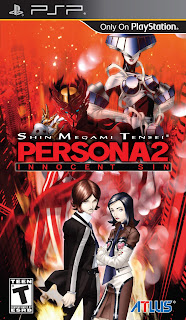 Shin Megami Tensei Persona 2: Innocent Sin is a remake of a PlayStation title of the same name. Never originally seeing a release outside of Japan, we all knew it was destined for a translation someday. That day is finally upon us, but the best part of Persona 2: Innocent Sin is that the game lends itself to the PSP hardware and offers more than the “fresh coat of paint, same game” approach many developers are taking today.
Shin Megami Tensei Persona 2: Innocent Sin is a remake of a PlayStation title of the same name. Never originally seeing a release outside of Japan, we all knew it was destined for a translation someday. That day is finally upon us, but the best part of Persona 2: Innocent Sin is that the game lends itself to the PSP hardware and offers more than the “fresh coat of paint, same game” approach many developers are taking today.
Japan has seen better days. You follow the silent protagonist Tatsuya Suou, a high school student who soon finds out rumours are literally altering the landscape of the country for the worse. On top of this, students are contacting a being known as Joker via their phones. This mystifying character will either grant the dreams of a student or sap their souls, condemning them to a life of obscurity in the shadows. Things start to get interesting when Tatsuya’s friend, Lisa Silverman, wants him to rescue a student from a gang run by Eikichi Mishina. One thing leads to another and the three characters learn they have the powers of Persona – a spirit within that yields great power. Can the group stop Joker and save the innocent students?
In essence, Persona 2 can be split into three parts: exploration, battles, and rumour mongering. The real highlight is the former and discovering of the game’s world. Instead of clichéd dungeons, you’ll explore high schools, music shops, and other settings that certainly provide a different setting to what we usually see in the world of JRPGs. Traversing these areas gives off a deceptively pleasing vibe, since you don’t “feel” like your characters are in any danger – even though they are.
The objectives aren’t necessarily traditional either – the first dungeon has you exploring your high school, Seven Sisters, to destroy all the emblems in the school. The game also packs a variety of side-quests at the theatre, which you can play at your own leisure. Many of the locations are as vast as standard real-life locations and tons have accessible rooms, so it’s enjoyable to simply traverse the areas – though you will be bombarded by demons.
These fiends play a vital role in Persona 2. The turn-based battles against said creatures can play out as amusing conversations, or as hostile fights to the death. Each demon has different personality traits and interacting with them in a friendly way can yield rewards – specifically Tarot Cards. Cards help you obtain new Personas – an invaluable asset when combating demons. Fights can be lengthy and tactical affairs or swift automatic sequences for those who need to grind levels. Demon encounters can be rather frequent, but the auto-battle and skip functions should make any irritations people have with random encounters minimal.
Rumour mongering is a rather unique mechanic that allows you to control the flow of events in your favour. Early in the game you’ll encounter absurdities like walking statues and face-disfiguring emblems. The power of gossip is undeniably immense, but that’s when you discover you can use it to your benefit. Once you hear a rumour from one of the game’s many denizens, you can hire a detective agency to make it known. It costs a certain amount of yen to start churning the mill, but doing so can cause shops to open, items to appear, or even experience-bloated toilets to show up in your school.
Despite the meaty size of the game, loading times are remarkably rapid when playing off a memory stick. If you find it to be troubling, you can install extra data for the game, thus decreasing the waiting time. I cannot vouch for the load times of the UMD version, but it goes without saying that the installation option would significantly reduce them.

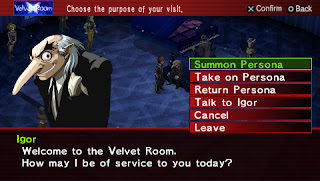
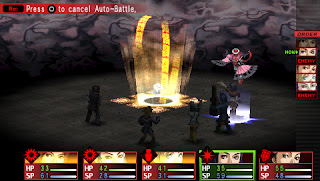
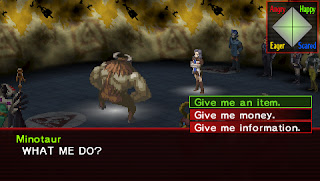




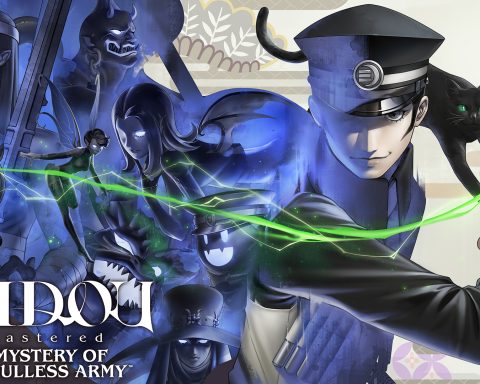


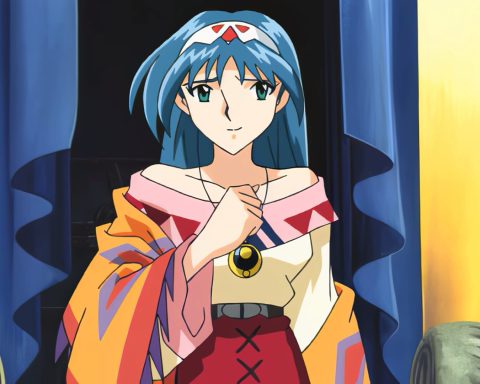
this one's been on my amazon wishlist for a bit. I only played one of the persona games, back on the PS1 what seems like a zillion years ago, but I absolutely loved it and with all of these remakes/updates of them coming out, I plan to be stocking up soon. 🙂
this one's been on my amazon wishlist for a bit. I only played one of the persona games, back on the PS1 what seems like a zillion years ago, but I absolutely loved it and with all of these remakes/updates of them coming out, I plan to be stocking up soon. 🙂
This was the game that got me into the series that I love now, and it's good to see that it still holds up. I look forward to playing through it again someday.
Hey Mr Frog! Have you played Nocturne/ Lucifer's Call yet (name depends on what part of the world you live in)? That is by far my favourite game in the series, but I haven't really played enough of them to judge how good it is over the entire franchise.
Only a little. It's very good so far, but a little disorienting. It's definitely up there with the best so far, though. The atmosphere and gameplay are top-notch, and while the story has been minimal, what's there is pretty good, too. I'll probably play more once I finish Persona 3 FES, which I'm playing right now.